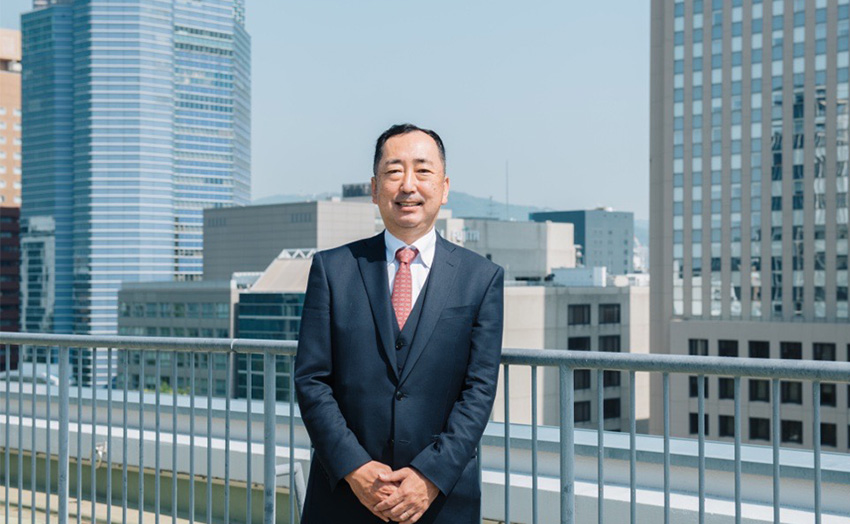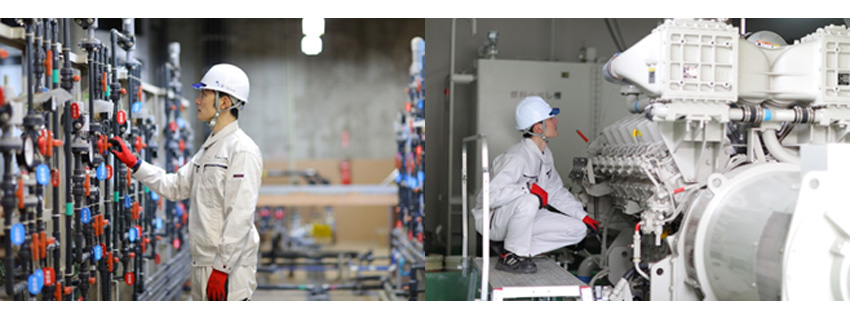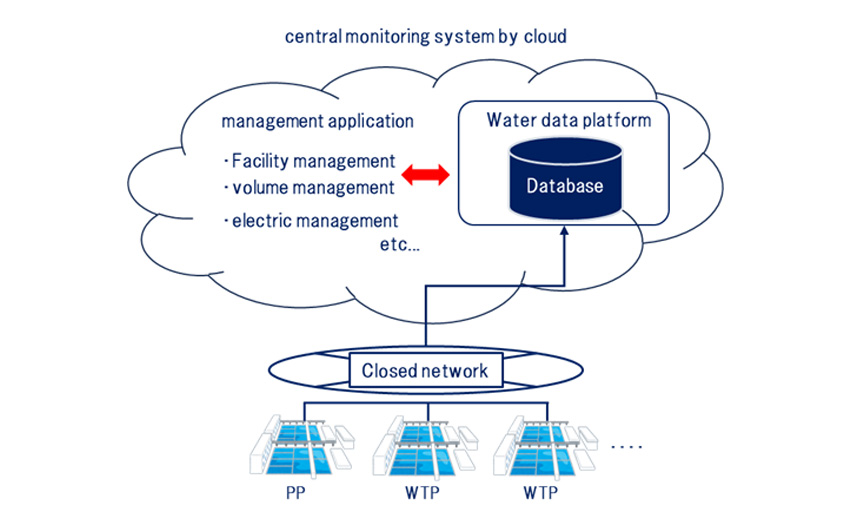Mizumirai Hiroshima, established in 2012 as a unique public-private partnership water supply company, faces challenges and opportunities in Japan's water management sector. With a focus on human resources and customer-centric service, the company navigates the balance between development and management, offering tailored solutions to Hiroshima Prefecture and Kure City.

Mizumirai Hiroshima was founded in 2012 as a public-private partnership water supply company and both Hiroshima Prefecture and Swing Corporation invested in your firm. You are responsible for aspects of water supply including the operation maintenance and management of water and sewage facilities. With a relatively short history, what challenges has your company had to overcome?
The government and private sector relationship in Japan is a very unique case. I think that human resources are the important aspect and that is because most of Japan’s sewage and water infrastructure is 100% controlled by the government. The private sector is always thinking about development, but realistically management is probably more important. This development and technology mindset doesn’t fit the water business.
My business is very fortunate to have a direct feed to the customer, and in this case, the customer is the local government. We can develop for the customer with their specific needs in mind, and that is catering to the real customers behind this operation, the general public. Hiroshima prefecture is a very good place to have a direct contract, and there is no requirement to bid for contracts.
With your establishment, you became Japan’s first privately run water supply business management company, and in 2019 Kure City became a shareholder of your firm, with the investment ratio being 3% to Kure City, 62% to Swing, and then 35% to Hiroshima prefecture. It makes your business very unique since you are a mixture of both public and private. Do you believe this model can be replicated elsewhere in Japan?
There are two points I would like to make. and there are many benefits to this model. Big cities like Tokyo, Yokohama, and Osaka, have very prevalent private sectors. 100% stock control means 100% staff control, it doesn’t matter if it is government or private. Price is important in these cities' cases, but even more important is developing and changing management systems.
Human resources is a big issue in Japan, and this is a good fit for foreign workers who possess excellent skills. I think that honestly we can mix and shift water businesses around the world. Japan is an amazing country with so much to offer the world but suffers at times from closing itself off to the rest of the world. Survival relies on expanding our borders and inviting those with information, development, and technologies to our country. Honestly speaking, there needs to be passion behind the younger generation, particularly in the water field. Our company is a necessity in Japan.

Workers doing maintenance work
Digitalization is a key point, and it has a significant impact when it comes to water and sewage facilities as it allows for real-time moderating of systems and the remote control of valves and pumps as well as data collection. Furthermore, DX tools can enhance water quality monitoring, which can rapidly detect contaminants or anomalies that can pose a risk to public health. In addition, DX can aid resilience to natural disasters such as earthquakes and typhoons. What innovative technologies are you applying to your business and services?
First of all, I 100% agree with you and in my personal opinion it is completely necessary. Unfortunately in Japan, the infrastructure such as water, sewage, and gas are not shifting to DX. There is considerable craftsmanship involved in these fields, and there is a need to collect data. Realistically it is difficult to shift the thinking to a more DX-driven one. Japan as a country is still driven by paper-based data collection and manual human input. My company and I feel that automated data is vital to developing technologies in the future, and this automated data can be mixed with emerging AI technologies. In particular, I think this is a must in the water and sewage fields.
The same case is occurring in Southeast Asia too, and there the facilities as well as the knowledge base are poor when it comes to water management. Fortunately, the technology is high and easy to transfer. The goal here is to get the DX technologies in Japan to the same level as in South or Southeast Asia. Although I don’t want to accept this as the truth, unfortunately, the United States and Europe have already far exceeded these levels for water and sewage management.
In the near future, we want to challenge this establishment, developing a dashboard and cloud systems. We were able to secure the contract for Hiroshima prefecture in 2023, in particular the contract for creating a cloud system. 2024 will see tests for this cloud system begin, with full management control beginning in 2026.

Screenshots of DX dashboard or cloud system
In addition to your robot cleaning system, you also have pipe cleaning services. For this, you have developed your patented cleaning method which incorporates carbon dioxide for food additives. This can improve the quality of tap water by cleaning the pipes safely without actually damaging them. How were you able to develop this unique cleaning method and what makes it superior to other methods available such as flushing or chemical cleaning?
Unfortunately, our technology is costly and the government sector is decreasing the contract cases for cleaning systems. On the other hand, our parent company does have the patent although the company as a whole was only established 12 years ago. The first 4-5 years involved installation projects that we accepted from the government, and through these projects, we were able to prove that we have a good system. The Japanese pipeline systems are really old, and although they are around 40 years old, the real conditions show them to have aged 60-80 years. This means that cleaning systems can potentially damage the pipelines. I believe that there needs to be maintenance conducted every 5 years after the initial 20 years of installation. After heavy damage, it needs to be replaced and therefore the need for pipeline cleaning is decreasing.
Japan is the oldest society in the world with a rapidly shrinking population thanks to low birth rates. It is estimated that in the next 15 years, one in three people will be over the age of 65, which creates issues such as a labor crisis and problems with skill inheritance. Your firm has many specialized workers for maintenance services, but with the shrinking domestic market there is less need for new infrastructure and water supply projects. What are some of the challenges of this demographic shift and how are you reacting to them?
This is a real problem for my company but fortunately, three years ago we established our new home base with a target of management and digitalization. We are promoting DX as a game to the younger generation, and we know that younger people in Japan do like the gamification of tasks. We announced that we were looking for those with experience in IT fields in an attempt to combine our experience with water supply. We aren’t too concerned about their background since we believe that through the use of digital technology, we can train these young people to become experts in the water field. We’ve even hired staff who worked in convenience stores before, we are looking for anyone who wants an opportunity to learn new skills.
At the current stage, I’m not sure if the younger employees understand the importance of digitalization but the executives here have embraced digitalization and have explained how it is critical to our operations moving forward. I think this has enabled many younger employees to now understand not only how important digitalization is at Mizumirai, but also how important it is for Japan as a whole.
I believe that the understanding of digitalization is a step-by-step process. Since Japan is rapidly aging, hiring has become more of a challenge to companies like ours. In our hiring processes we are targeting younger people because whatever happens in the future, we will always need human resources. Our target is young people who work in any industry. The younger generation can easily bring new ideas to light and I think that is a strong point for hiring such young staff.
How do you believe digitalization and DX will shape the water supply and storage facility management sector in the next five to ten years?
Ideally, we are looking at a form of control center where operations can be managed. Human resources are necessary to visit the facility in case of a disaster or accident, but in general, everything should be controlled and maintained from one place. This is very skewed because Japanese facilities are high-quality, so problems don’t happen very often. This is our target at this point and DX is developing across the board for the water supply industry.
Network systems are necessary, but unfortunately, three major companies control those in Japan. Next year Japan’s government is planning on opening a new network system so this is great timing for the challenges we face. Competition will reduce costs and will assist in our plans for a control center. Controlling everything in a hub will allow us to better make use of our human resources in an efficient manner.
Japan is known as a nation that is very insular and now there is a pressing need to go overseas and expand its knowledge and technologies. We know that your firm has worked with the Japan International Cooperation Agency (JICA) as part of a training project to train new employees. When it comes to partnerships, are you also looking to partner with foreign governments or companies to expand your network?
In terms of overseas, now we are focusing on Pakistan, South Asia, and Africa. We are contracted for some projects with the World Bank. Honestly, we are seeking challenges because we have knowledge and skill in water supply and we feel we can contribute. Last year some younger employees visited Pakistan to share our technology. One point I would like to stress is that we don’t go to these locations to teach, instead, we work together with local entities to co-develop solutions.
In May 2024 our company has been invited to hold a seminar on DX and digitalization in the water sector. We are very excited about the prospect of this seminar. I think that this will open channels to further expand our network with like-minded companies and entities.
Imagine that we come back in 2027 and have this interview again. What goals or dreams do you hope to achieve by the time we come back for that new interview?
As a policy of ours, we are always having discussions with our owners, and through those discussions, we know that our targets are major Japanese water companies. Nowadays our contracts are for facility and tap water management and that includes pipeline mapping and facility control systems. Having said this, 2027 is still a few years away and it is hard to imagine what life will have in store for the company.
One clear goal is to make our company more famous which will make our company more attractive to the younger generation. We want to transform the company into a place that young people want to work in.
I think in terms of goals it comes down to two key factors. Recruitment and digitalization are those factors and will be the core focus for us moving towards 2027.
For more details, explore their website at https://www.mizumirai.com/
0 COMMENTS